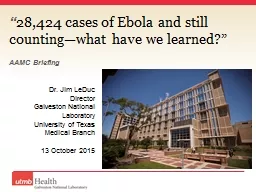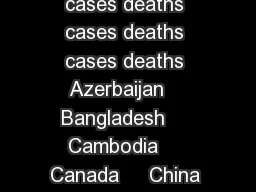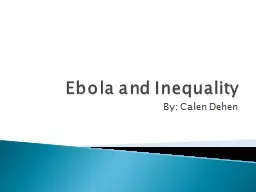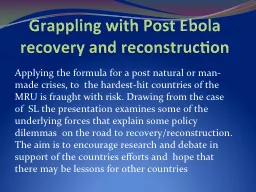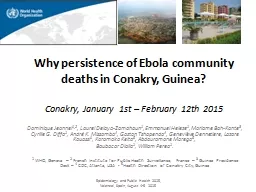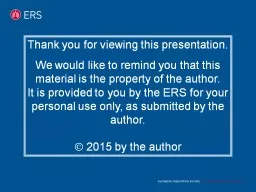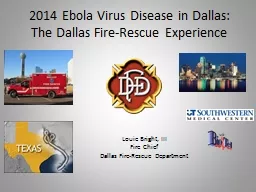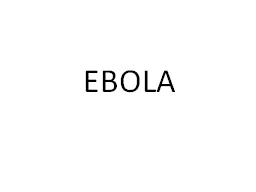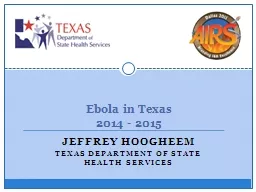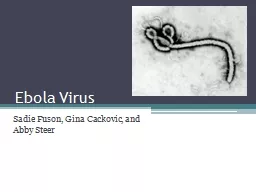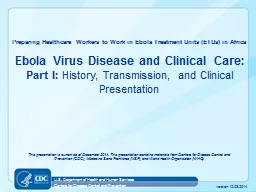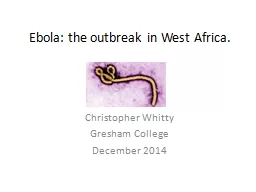PPT-“ 28,424 cases of Ebola and still counting—what have we learned?”
Author : mitsue-stanley | Published Date : 2018-12-04
AAMC Briefing Dr Jim LeDuc Director Galveston National Laboratory University of Texas Medical Branch 13 October 2015 GNL Mission The mission of the GNL is to assist
Presentation Embed Code
Download Presentation
Download Presentation The PPT/PDF document "“ 28,424 cases of Ebola and still coun..." is the property of its rightful owner. Permission is granted to download and print the materials on this website for personal, non-commercial use only, and to display it on your personal computer provided you do not modify the materials and that you retain all copyright notices contained in the materials. By downloading content from our website, you accept the terms of this agreement.
“ 28,424 cases of Ebola and still counting—what have we learned?”: Transcript
Download Rules Of Document
"“ 28,424 cases of Ebola and still counting—what have we learned?”"The content belongs to its owner. You may download and print it for personal use, without modification, and keep all copyright notices. By downloading, you agree to these terms.
Related Documents

